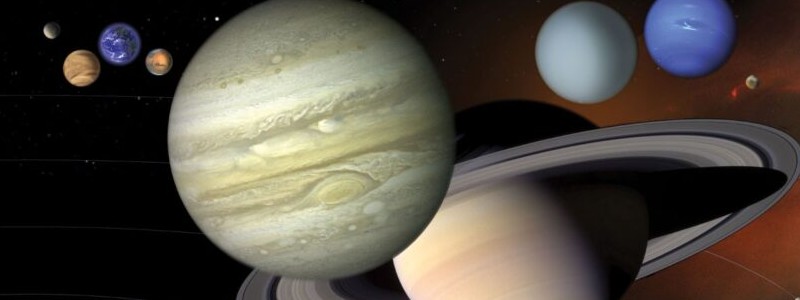The Great Conjunction – How and When To See It!

On the evening of December 21st — the first day of winter, and just four days before Christmas — we are receiving a special gift: a extraordinary, rare celestial event.
The Planets Align
The planets Jupiter and Saturn will be aligned, coming so close that some are referring to it as the “Christmas Star”. They will appear so close together that evening, and to the unaided eye, they will almost seem to merge.
The two planets are not physically that close together, but they will be aligned along the same line of sight to us on Earth. In fact, Jupiter and Saturn will be more than 455 million miles (733 million kilometers) away from each other, in their separate orbits around the Sun.
Jupiter “Laps” Saturn
Jupiter, the closer of the two, takes about 12 years to orbit the Sun. Saturn is a lot further from the Sun, so it takes nearly 30 years to orbit it. The orbits of both planets, as well as the Earth’s, are roughly parallel to each other, and move in the same direction.

As a result, at intervals of about 20 years, Jupiter “laps” Saturn, an occurrence that astronomers call a conjunction. When this happens, the two planets appear close to each other when viewed from Earth.
Because their orbits are not perfectly parallel, how close they appear depends on when the conjunction occurs. This conjunction will be unusually close: just 6 arc-minutes apart, or one-fifth the width of the full Moon.
An Event 800 Years In The Making
This year, the Jupiter-Saturn conjunction will be especially close, the closest in 800 years. On the first day of winter, December 21, the planets will be close enough to appear in the same telescope field of view.
This conjunction of Jupiter and Saturn is unusual not only because of how close they will be in the sky, but also because this one occurs so close to Christmas. The last time that happened was in the year 1265.
How to Watch
Want to see the conjunction through Chabot’s telescopes? You can watch The Great Conjunction Virtual Telescope Viewing live with us on December 21 at 5 p.m.
To view the Saturn and Jupiter conjunction, wait about 30 minutes after sunset on the evening of December 21, and then look low in the southwest sky. They’ll be easy to see with the naked eye, though you might mistake them for a single bright star. With binoculars or a small telescope, you’ll easily see them both as separate planets in the same field of view.




